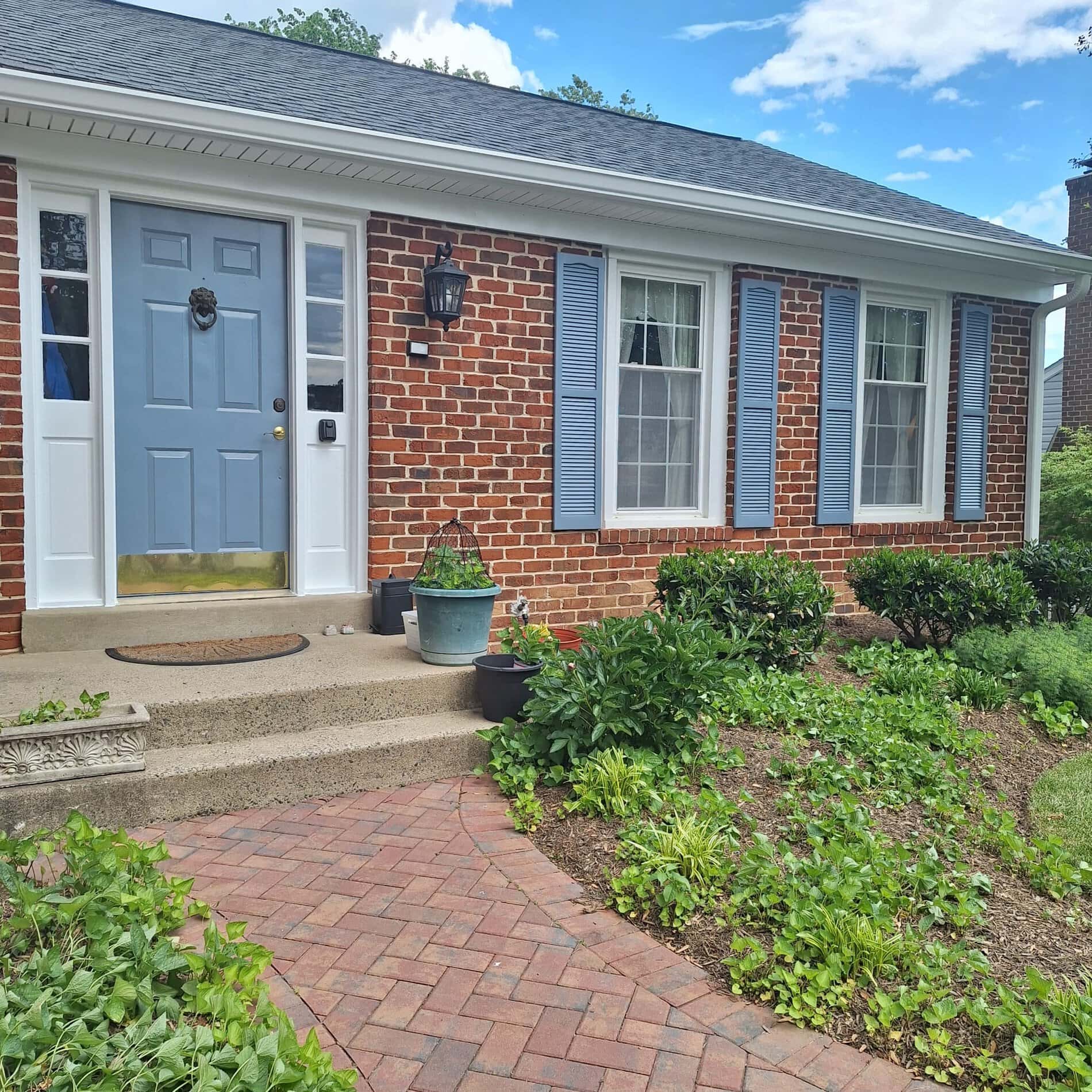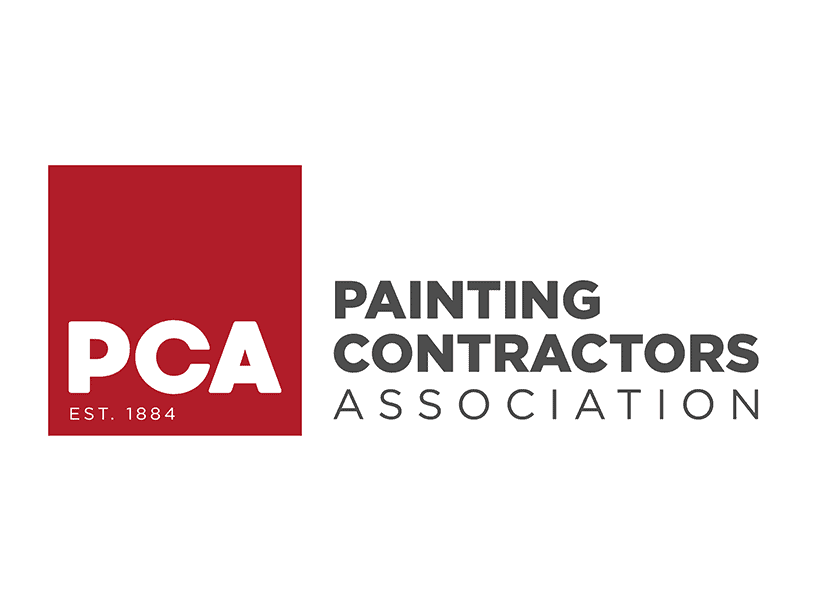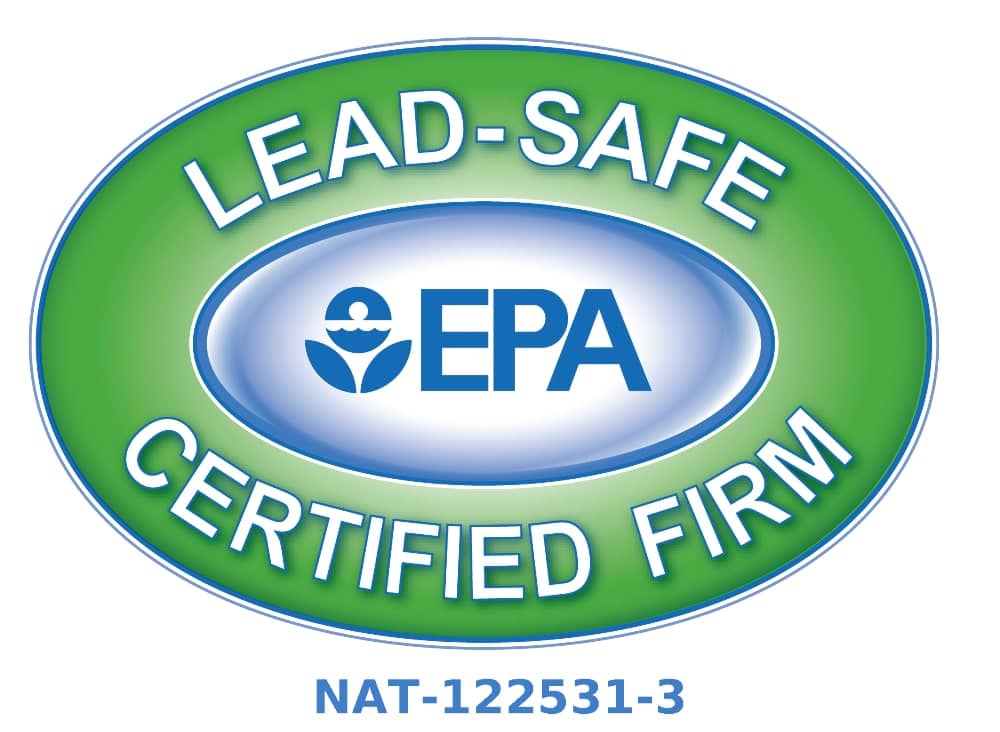
29 Jul Choosing the Right Exterior Paint for Brick Homes in Vienna, VA
Vienna’s unique climate and architecture make selecting the right exterior paint for your brick home crucial in maintaining its beauty and durability. When painting brick, consider the brick’s natural colors, texture, and how paint interacts with these elements over time. With the right choices, you can enhance your home’s curb appeal while protecting it against weathering. At Home Works Painting in Vienna, VA, we help you find paint colors and finishes that perfectly complement your brick exterior, keeping your home looking vibrant for years to come.
Key Takeaways:
- Brick exteriors feature a variety of colors and shades due to natural aging and texture, offering many options for selecting paint colors that complement and highlight these tones.
- Rich, earthy paint colors with grayish or brownish undertones work best to pair with natural brick, whether you prefer warm or cool contrasts to enhance the exterior’s visual appeal.
- Simplicity around the brick — such as streamlined landscaping and minimal decorative elements — allows the texture and warmth of the brick to serve as a strong focal point for your home’s façade in Vienna, VA.
If you’re in Vienna, VA, and considering refreshing the exterior of your brick home, Home Works Painting can help you find the perfect paint pairing to bring out the best in your brick while creating a timeless, inviting look. Visit Home Works Painting to learn more and get started on your project today.
Deciphering the Palette: Understanding Brick Colors
The Spectrum of Natural Brick Tones
Brick isn’t a single, uniform color but a complex mix of hues ranging from deep reds and burnt oranges to mellow browns and even subtle hints of purple or black. In Vienna, VA, local clay sources and firing techniques contribute to distinctive color variations that give every brick façade a unique personality. You’ll often find multiple tones within a single brick face, which can play beautifully off your chosen paint colors if you select shades that complement the brick’s natural range.
Aging and Its Influence on Color Variation
Over time, exposure to sun, rain, and atmospheric conditions causes bricks to develop a patina that alters their original colors. Weathering can mute vibrant reds into softer, earthier tones or deepen browns into richer shades. This natural aging adds character, but also means that the color you see today may differ significantly from what it was when the brick was new.
Examples from local projects in Vienna highlight this effect clearly: bricks fresh from the kiln often boast bright, uniform colors, but after just a decade outside, many develop spots of fading, mineral deposits, or slight discoloration from moss and lichen growth. These changes aren’t flaws but rather add dimension and texture to your home’s façade. When opting for paint, considering these evolving tones can help maintain a seamless, harmonious look over time rather than a contrast that may grow harsher as the brick naturally ages.
Nature’s Canvas: Selecting Complementary Paint Colors
Warm vs. Cool Undertones in Paint Selection
Choosing between warm and cool undertones hinges on the mood you want to create against your brick exterior. Cooler shades like slate blue or muted greens create a striking contrast that highlights the brick’s warmth, often making your home feel fresh and inviting. Alternatively, warm tones—think deep taupes or earthy olives—blend seamlessly with the brick’s natural reds and oranges, providing a cohesive and soothing appearance. In Vienna, VA, balancing your paint undertones with the brick’s natural complexity ensures your home’s exterior captures both charm and personality.
Shades that Harmonize with Brick’s Richness
Shades with grayish or brownish nuances tend to bring out the subtle richness in brick. For example, a soft mushroom gray or a warm beige can echo the mortar lines while accentuating the brick’s varied hues. These earthy tones serve as a neutral canvas that won’t compete but rather enhance the natural texture and multicolor depth found in your façade.
Diving a bit deeper into harmonizing shades, consider that bricks often carry hidden undertones—perhaps a whisper of plum, olive, or deep rust—that can be subtly enhanced by choosing paint colors that reflect those same muted qualities. Using a paint with a slightly “muddy” undertone not only complements the brick but also supports the natural weathering that gives brick its character over time. Locations with fluctuating seasons, like Vienna, VA, benefit from these adaptable shades that age gracefully and maintain visual interest without feeling too stark or plain.
Crafting Contrast: How to Balance Textures in Exterior Design
The Role of Brick’s Texture in Design Choices
Brick’s naturally rough and varied texture adds depth and character to your home’s exterior that smooth siding or stucco often cannot match. This textured surface naturally becomes the visual anchor, allowing you to choose simpler, more restrained materials nearby. For instance, pairing brick with matte-finish wood or metal trim can create a pleasing contrast without overwhelming the façade. Selecting paint colors with subtle, earthy undertones helps maintain harmony while making the brick’s texture stand out as the star element.
Simplifying Surrounding Elements for Enhanced Visual Appeal
Maintaining a streamlined look around your brick exterior enhances its natural richness. Using one or two shrub types, repeated in groupings, instead of a mix of varied plants creates a cleaner frame for the brickwork. Edging materials in subtle tones and minimalist designs, paired with understated porch furniture or planters, will prevent distractions and keep the focus on the brick’s textured beauty.
When you simplify landscaping and surrounding décor, you give brick space to breathe and command attention. For example, Vienna homes that limit garden décor clutter in favor of a few well-placed planters create an inviting, elegant setting. Clean, straight lines in pathways or edging complement the brick’s ruggedness, balancing organic texture with geometric order. This strategic simplification not only enhances curb appeal but can also make your paint choices more impactful, as there are fewer competing elements competing for the eye.
The Power of Earthy Hues: Aligning with Vienna’s Aesthetic
Popular Earthy Color Pairings in Local Design
In Vienna, VA, homeowners gravitate toward earthy paint shades that complement the natural brick’s warm undertones. Soft olive greens, muted taupes, and deep charcoal grays are common choices that highlight the brick’s intricate color variations without overpowering them. You’ll often see these tones paired with creamy off-whites or subtle sand shades on trim and accents, creating an inviting yet sophisticated exterior that blends seamlessly with the area’s wooded surroundings.
Creating Cohesion with the Environment
Choosing paint colors that echo the local landscape enhances your home’s integration into Vienna’s diverse natural setting. Earthy tones reflecting the hues of nearby oaks, pines, and soil tie your exterior to its environment, providing visual harmony. This approach not only boosts curb appeal but also respects the town’s well-established character and tranquil ambiance.
By selecting colors that resonate with the local flora and terrain, your brick home harmonizes with Vienna’s seasonal shifts—from the deep greens of summer to the warm ambers of fall. This continuity between home and environment fosters a sense of place and permanence, making your exterior feel less like an isolated element and more like a living part of the neighborhood. Such thoughtful color alignment can complement natural light variations throughout the day, enhancing the depth and texture of your brick façade.
Practical Considerations: Maintenance and Longevity of Paint
Choosing Durable Paint Formulations for Brick
Opting for high-quality, durable paint designed specifically for masonry or brick surfaces can significantly extend the life of your exterior finish. Look for elastomeric or acrylic latex paints that offer excellent adhesion and flexibility, which help resist cracking and peeling as brick naturally expands and contracts. These formulations also provide solid resistance against moisture intrusion and UV damage, both major concerns for brick exteriors in Vienna, VA’s variable climate. Investing in paint with mildew and fade resistance ensures your brick’s aesthetic longevity without the need for frequent repainting.
The Impact of Seasonal Changes in Vienna on Paint Performance
Vienna experiences a full range of seasonal shifts, from hot, humid summers to cold winters with freeze-thaw cycles. These conditions place significant stress on exterior paint, especially on porous surfaces like brick. Paint that isn’t formulated for this environment can quickly blister, peel, or fade when exposed to such fluctuations. Selecting products with strong moisture barriers and flexibility that accommodate thermal expansion, while also preventing water infiltration that can cause spalling or efflorescence, is crucial.
Winter freeze-thaw cycles are particularly challenging for painted brick in Vienna, VA. Moisture absorbed by brick freezes and expands, which can crack less flexible paint films. Summers add humidity and intense sunlight, accelerating paint degradation and color fading if the formulation lacks UV protection. You’ll want paint that remains breathable enough to allow trapped moisture to escape without sacrificing water resistance. Professional-grade elastomeric paints often strike this balance, minimizing damage caused by temperature swings and moisture while preserving the brick’s natural texture and color depth throughout the year.
Local Trends: What’s Popular in Vienna, VA?
Neighborhood Aesthetic Preferences
In Vienna, VA, many neighborhoods feature a harmonious blend of traditional and modern styles, particularly in their brick exteriors. You’ll often find homeowners opting for muted, earthy paint tones that complement the natural warmth of brick rather than compete with it. Lighter shades of gray, taupe, and creamy whites are popular choices that provide contrast while maintaining a timeless feel. This preference creates a cohesive streetscape that respects the area’s historic charm yet feels fresh and inviting.
Influences of Architectural Styles on Color Choices
The rich variety of architectural styles in Vienna significantly shapes paint color decisions for brick homes. From Colonial and Craftsman to mid-century modern, each style suggests a unique palette that enhances the brick’s character. Many Colonial homes favor classic whites or soft blues for trims to highlight symmetry. At the same time, Craftsman styles often incorporate deep greens or browns that emphasize natural materials and earthy vibes, creating a grounded, comfortable look.
Architectural style doesn’t just dictate color family—the style also influences where and how you use paint. For example, a Victorian-inspired brick home might encourage detailed trim painting to accentuate ornate moldings, often in contrasting colors to set off the brick. Alternatively, mid-century modern homes typically showcase sleek, minimal trim with monochromatic or complementary tones that allow the brick’s texture to take center stage. Understanding these nuances helps you select a paint scheme that honors both the brick’s natural appeal and the home’s architectural identity, making your exterior feel genuinely integrated within Vienna’s diverse design landscape.
Expert Tips for Painting Brick Exteriors
- Choose breathable masonry paint explicitly designed for brick to prevent moisture buildup and peeling.
- Test paint colors on a hidden brick section to see how natural light in Vienna, VA, affects the tones throughout the day.
- Use a quality primer formulated for brick to ensure adhesion and durability over time.
- Seal the brick surface if unpainted to protect against water damage before applying paint.
- Apply paint with a sprayer or brush that reaches into all mortar lines and textured surfaces for consistent coverage.
- Maintain simple exterior details to highlight the brick’s natural texture and avoid visual clutter.
Step-by-Step Guide to Preparing Brick for Paint
Preparation starts with cleaning your brick using a stiff brush and a mixture of water and trisodium phosphate to remove dirt and mildew. Inspect for damaged mortar and repair as needed with mortar patch. Next, ensure the brick is completely dry—this can take several days. Apply a high-quality masonry primer appropriate for porous surfaces to provide strong adhesion. Proper prep like this ensures your paint job lasts longer and looks smooth, preventing peeling or bubbling in Vienna’s seasonal weather.
| Preparation Step | Purpose |
|---|---|
| Cleaning Brick Surface | Removes grit, dirt, and mildew, improving paint adhesion |
| Mortar Repair | Fixes cracks and prevents moisture penetration |
| Drying Time | Ensures no trapped moisture, preventing paint failure |
| Applying Primer | Improves adhesion and seals porous brick surface |
Common Mistakes and How to Avoid Them
Applying paint to damp brick tops is a common mistake; moisture trapped underneath leads to peeling within months. Another pitfall is skipping primer, which causes uneven texture and shortened durability. Using the wrong paint type—such as oil-based paint not designed for masonry—often results in cracking. Overloading with thick coats can obscure brick texture and create blotchy finishes. Simplifying your exterior by reducing excessive details around your brick allows the rich texture to stand out instead of competing with flashy décor. Knowing these missteps helps you achieve a flawless brick paint finish that complements Vienna’s architecture.
Poor surface preparation consistently undermines paint longevity. Skipping cleaning or neglecting mortar repair traps dirt and moisture beneath the paint, accelerating degradation. Applying interior or standard latex paint instead of specialized masonry paint ignores the breathability that brick requires, leading to trapped moisture and eventual peeling. Overly thick layers decrease paint flexibility, especially in a climate with wide temperature fluctuations, such as Vienna, VA. Maintaining a clean, simple exterior environment around your painted brick emphasizes its natural texture and rich hues while avoiding visual noise. Following expert guidance on preparation and paint choice ensures your investment performs well for years.
Conclusion
As you can see from above, selecting the right exterior paint for your brick home in Vienna, VA involves understanding the various colors within the brick, choosing rich, earthy tones with subtle undertones, and keeping surrounding details simple to let the brick shine. By focusing on one main brick color to enhance and pairing it thoughtfully, you can refresh your home’s exterior beautifully. For expert guidance and quality results tailored to your needs, trust the professionals at Home Works Painting to bring your vision to life.
FAQ
Q: What types of paint work best for brick exteriors in Vienna, VA’s climate?
A: For brick homes in Vienna, VA, it’s essential to select high-quality, breathable masonry or latex paint specifically designed for exterior brick. These paints allow moisture to escape from the brick, preventing trapped moisture that can lead to peeling or damage. Additionally, choosing a paint with UV resistance helps maintain color vibrancy despite the region’s intense sun exposure throughout the year.
Q: How can I select a paint color that complements the natural tones of my brick home in Vienna?
A: Since brick naturally comes with varied colors and textures, the best approach is to identify a dominant tone or shade within your brick. For homes in Vienna, VA, pairing these tones with rich, earthy paint colors featuring muted brown or gray undertones tends to enhance the overall curb appeal. Cool colors with subtle grayish undertones create a nice contrast, while warm tones offer a more cohesive, blended look. Sampling colors in natural daylight before committing is beneficial.
Q: How should I approach the exterior design details when painting brick in Vienna, VA?
A: Brick adds texture and visual interest on its own, so simplifying surrounding exterior details is recommended. In Vienna’s suburban settings, consider clean landscaping with repeated shrub varieties, minimal edging in understated materials, and pared-back porch décor such as a few simple planters or chairs. This strategy allows the brick’s natural character to stand out without overwhelming the overall design.

Mike Katounas is the owner of Home Works Painting, a painting business in Northern Virginia. He has over 15 years of experience in residential interior and exterior painting, drywall installation/repair, carpentry, wallpaper removal, power washing, commercial painting, color consultation, and staining/sealing. Their service areas include Chantilly, Fairfax, Herndon, Oakton, Reston. Mike takes pride in his work, and he always follows a strict code of conduct that includes the use of quality paint, a clean workspace, and an honest, respectful approach to his customers.












Sorry, the comment form is closed at this time.